How to choose sunscreen. Sun protection factor SPF: what is it, how to determine it correctly and choose the most effective remedy
SPF is a sun protection factor. It denotes the ability of cosmetic products to increase the time of safe exposure to the open sun.
What do the numbers in the abbreviation SPF mean?
The number following the abbreviation SPF (Sun Protection Factor) indicates how many times you can increase the time of safe exposure to the sun without the risk of sunburn.
The value of the SPF factor can be in the range from 2 to 50 units. It is calculated in special laboratories, based on the fact that a certain agent will be used in an amount of 2 mg per 1 sq. see skin surface. Most often, sunscreens and lotions are produced with an SPF value, as well as day creams, foundations, powders, lipsticks and lip balms.
SPF |
Percent protection |
Category |
Base / main |
||
Base / main |
||
Medium |
||
Medium |
||
Medium |
||
High / high |
||
High / high |
||
High / high |
||
High / high |
What determines the choice of SPF factor
The choice of sunscreen depends on the skin phototype. There are six in total, but four are most common in our latitudes:
1 phototype
Very fair skin and hair, often with a red tinge. Freckles on the skin. The eyes are blue or green. Recommended products with SPF factor not lower than 30 at the end of the summer season and from 40 to 50 at the beginning. The safe time in the sun for representatives of this phototype is no more than 5 minutes. That is, theoretically, a sunscreen with an SPF factor of 50, if properly applied, protects the skin for 250 minutes (5 x 50), and with an SPF factor of 8 - 40 minutes. But do not forget that any, even the most effective sunscreen protects not 100 percent.
2 phototype
Light skin, light brown hair, brown or blue eyes. At the beginning of summer, you should use products with an SPF factor of 30-35, by the end of summer they can be replaced with products with an SPF factor of 15. The safe maximum time in the sun is 15 minutes.
3 phototype
Most common in middle lane phototype. Light skin, blond or brown hair, dark eyes. Representatives of this phototype can use protective equipment with an SPF factor of 8 to 15 from the beginning to the end of the summer season. The safe maximum time in the sun is 20 minutes.
4 phototype
Dark skin, dark hair and dark eyes. Representatives of this phototype may not be afraid for the condition of their skin on the beach, even with a cream with an SPF factor of 8. Safe time in the sun is 30 minutes.
Why Use SPF Creams?
Daily creams with active components that protect against harmful solar radiation are an excellent prevention of premature skin aging (photoaging). Special sunscreens for tanning help to avoid extremely unpleasant and painful sunburns.
How to use SPF products
All sunscreens (that is, those with an SPF factor) are applied 20 to 30 minutes before going outside. After 20 minutes, the application must be repeated.
Sun protection products are only effective when applied carefully and in sufficient quantities. Don't count on absolute sun protection with sunscreen powder if you lightly brush your nose a couple of times in the morning. Sunscreen makeup needs to be maintained throughout the day.
The main rule when using cosmetics with an SPF factor is that it is applied at the final stage of makeup. That is, if you apply a sunscreen tonal foundation, and then cover it with a layer of moisturizer, you will reduce all the active action of the foundation to zero.
Because water, including that contained in moisturizing creams, destroys the protective barrier. For the same reason, it is necessary to reapply sunscreen on the beach after swimming.
Summer... Each of us loves to soak up the rays of the gentle sun, lie down on the beach, getting a beautiful, even tan. And just walking the streets in clear weather during the hot season (or even all year round, if it happens somewhere in Australia or Southeast Asia), we find ourselves at risk. Why? Because in addition to sunburn, they can cause significant harm to our skin. The result of their excessive exposure is the dryness of the skin, especially the face, arms, shoulders - that is, those places that are not hidden under clothing in hot weather; the appearance of freckles and age spots; and in severe cases Sun rays can cause one of the most difficult forms of cancer to treat, melanoma. How to protect yourself and your child? Use a product with SPF. What it is, how to choose it correctly depending on your skin type, and which brands you should trust, we will tell in our article. By the way, the sun is quite active in winter, so protection should be used on clear winter days, applying it to the face under makeup.
All about SPF: what it is, its levels and determining which indicator you need
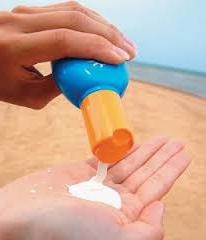 So, SPF (Sun Protection Factor) is a special substance, the main purpose of which is to absorb and neutralize the effects of sunlight. The level of this factor is usually indicated on the packaging of the product and can range from 5 to 100-120 (the scale is from weak to strong). Manufacturers produce sunscreen products in the form of lotions, sprays, wipes. You may also come across a cream with SPF for lips. Usually the SPF level of a product is indicated on the packaging. But which factor indicator should you choose? There is a simple rule: you need to determine how long your skin turns red under the scorching sun - usually this period is 10-15 minutes (although dark-skinned women can blush in half an hour, while 2-5 minutes is enough for natural blondes of the "Scandinavian" type ). So, the specified interval, let it be a quarter of an hour, you need to multiply by the SPF indicator indicated on your product, for example SPF 20. 15 x 20 \u003d 300 minutes, that is, you can safely spend 5 hours in the sun. It's that simple.
So, SPF (Sun Protection Factor) is a special substance, the main purpose of which is to absorb and neutralize the effects of sunlight. The level of this factor is usually indicated on the packaging of the product and can range from 5 to 100-120 (the scale is from weak to strong). Manufacturers produce sunscreen products in the form of lotions, sprays, wipes. You may also come across a cream with SPF for lips. Usually the SPF level of a product is indicated on the packaging. But which factor indicator should you choose? There is a simple rule: you need to determine how long your skin turns red under the scorching sun - usually this period is 10-15 minutes (although dark-skinned women can blush in half an hour, while 2-5 minutes is enough for natural blondes of the "Scandinavian" type ). So, the specified interval, let it be a quarter of an hour, you need to multiply by the SPF indicator indicated on your product, for example SPF 20. 15 x 20 \u003d 300 minutes, that is, you can safely spend 5 hours in the sun. It's that simple.
SPF: choose depending on the skin phototype
So, if you have just started sunbathing, for example, in the first few days at the resort, dermatologists recommend purchasing products whose SPF is slightly higher than you need. If you are the owner of light skin and hair, you will need SPF 50. But in the beginning, in the very first days, it would still be better to use a product with an indicator of 70. If you moderately choose products with SPF 15-20. For children, especially the youngest, whose skin does not yet produce sufficient amounts of the protective pigment melanin, use creams or lotions with SPF 80-100.
Funds with SPF: application rules
Keep in mind that creams and lotions should be applied 15-20 minutes before sun exposure to allow them to absorb into the skin. When spreading, pay special attention to the face, shoulders, hands. Also, don't forget about your back. Lips also need protection - you can apply a special hygienic lipstick with a protective factor. Although many manufacturers claim that their products are resistant to water, it’s still not worth the risk: if after applying the product with SPF you swam in the sea or pool, don’t be lazy and use the lotion again. It is better to spend a few minutes on this than to suffer after a few days
Popular Brands with SPF
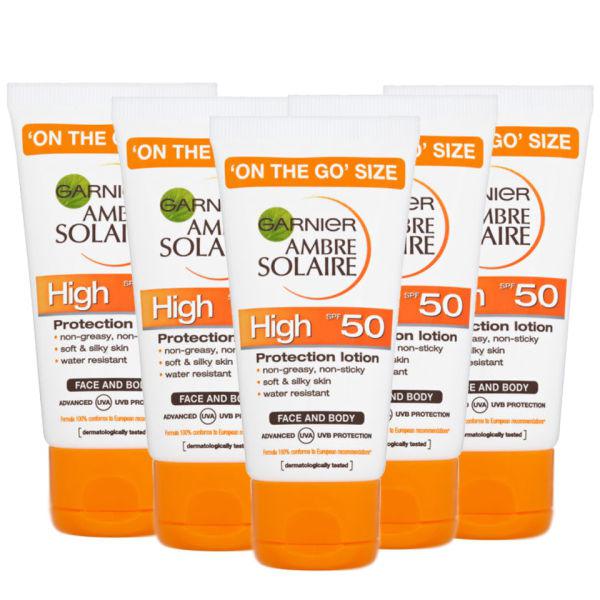 We have already found out what it is: products with a protective factor are presented in the form of all kinds of creams, lotions and sprays. The most popular manufacturers whose products have an excellent price-quality ratio are Garnier, Nivea, Sunshine and Red Line. These are inexpensive, democratic brands. Keep in mind that your hair also needs protection, so on the beach it is better to hide it under a cap or scarf or use special sprays. So, now you have the basic information about the SPF factor: what it is, how to calculate it correctly and which tool to choose. Now your holiday will not be overshadowed by sunburn, and your skin will get an even, intense, but at the same time healthy tan.
We have already found out what it is: products with a protective factor are presented in the form of all kinds of creams, lotions and sprays. The most popular manufacturers whose products have an excellent price-quality ratio are Garnier, Nivea, Sunshine and Red Line. These are inexpensive, democratic brands. Keep in mind that your hair also needs protection, so on the beach it is better to hide it under a cap or scarf or use special sprays. So, now you have the basic information about the SPF factor: what it is, how to calculate it correctly and which tool to choose. Now your holiday will not be overshadowed by sunburn, and your skin will get an even, intense, but at the same time healthy tan.
SPF (Sun Protection Factor) is a unique property of various types of cosmetics to protect the skin from the aggressive effects of sunlight. A number of creams are supplied with special additives to possess it. Certain cosmetics contain SPF initially, but for quality protection, you need to carefully read the labels, because our skin needs an individual approach.
Aristocratically pale skin and chocolate tan of actively resting people are two extremes of the summer season. Not everyone can sunbathe equally beautifully in the sun - this is significantly influenced by genetics, namely the production of melanin. This pigment is a bright indicator of natural sun protection, which is convenient to focus on when choosing products with SPF.
To understand how beneficial SPF creams and lotions are, take a closer look at your skin. Usually, redness from bright sunlight begins after 10-20 minutes (15 minutes is considered standard, but especially delicate skin can react in the first 5 minutes).
Multiply “your” time by the SPF on the bottle. For example, 15*30=450 minutes or 10*40=400 minutes.
So much time without damage to health you can spend in the sun after applying a special cream.
Reality is very different from such applied mathematics:
- SPF10 will not save fair-skinned people from redness,
- and SPF50 for dark-skinned women is a waste of money.
Why is it so?
UVA or UVB: which one to choose?
The first observations of skin and tanning have shown that the sun's UVA rays accelerate the aging of the epidermis and severely dehydrate the skin. Then the first creams with SPF appeared, which reduced the reaction to UVA, but also “scared away” the tan.
However, over the past few decades, dermatologists have concluded that excess sun can cause not only skin burns, but also serious cancerous diseases, and a UVA filter does not save you from such a scourge. it dangerous property attributed to UVB rays, which affect pigmentation.
It is necessary to catch different rays and reduce their negative impact in different ways, so you need to take into account your own attitude to tanning, the need for sun exposure and age.
The Art of Defense and the Properties of Factors
In summer tubes for skin safety, 2 protection options are used: physical and chemical.
physical factor It is provided by applying sun-reflecting particles in the composition of the product to the skin. This protection is provided by titanium oxide and zinc dioxide.
Chemical method protection is achieved by quenching ultraviolet radiation (avobezon, benzophenone, sulfates and silicone).
When used for a limited time, these options are considered safe.
If exposure to the sun exceeds 4 hours, then dermatologists are not ready to vouch for the result.
There is a controversial opinion that silicone and sulfates clog pores, and metal oxides can pose a carcinogenic threat.
Therefore, funds with SPF cannot yet guarantee 100% protection and safety..
- Clothing made from natural fabrics (cotton, linen, silk) can be called a physical filter.
- Chemical is in decorative cosmetics.
A dense layer of foundation or powder has an SPF15 level on its own. However, it is precisely a dense layer, light touches of a brush with powder that cannot create any protection.
Most day creams on the label hint at the presence of a sun protection factor, but night creams do not need it.
For the same reason, it is better to use the day-night cream option, and not super products with the effect of protection and moisturizing for 24 hours.
Phototype tan
The main way to choose a means of protection is based on your natural phototype (natural color of the skin, eyes, hair). There are 4 color combinations available.
Celtic type can be recognized by blond hair, blue and gray eyes, pale skin, sometimes with freckles. Red-haired girls also belong to this type. The skin instantly turns red in the sun and does not tan at all, but it gets burned very quickly.
What to do?
- Enjoy the highest protection SPF 40+ all summer long. The level of protection will drop slightly from SPF 50+ to SPF 30 during the season.
- Without SPF, girls of this phototype burn out in 5-10 minutes.
- In the summer wardrobe, there should be clothes with a long hem and sleeves, wide-brimmed hats made of natural materials to protect yourself from insidious rays.
Nordic and Scandinavian girls also distinguished by blue, gray and green eyes and pale skin, hair color is slightly darker (blond and brown-haired)
- A feature of the phototype is that they quickly and often burn out. The skin may become covered with freckles. A slight tan appears only towards the end of summer.
- At the beginning of the season, products with SPF 30+ are suitable for protection, then you can move on to SPF 15-20.
European leather- dark blond and brown hair, light skin, green, gray and brown eyes. This phototype is often found in our latitudes, tanning problems occur at the beginning of the season due to prolonged exposure to the sun, by the end of summer or vacation they can boast a beautiful chocolate tan.
Mediterranean phototype can enjoy the sun the longest: dark hair and eyes, combined with dark or olive skin, indicate this happy skin type. The skin's own capabilities allow you to sunbathe for a long time and often, sunscreens will suit the most low level with SPF 6-10.
Having determined how strong the remedy with SPF is, you need to understand the features of using summer cosmetics.
Form matters
In addition to convenient application and water resistance, sunscreens have the following properties:
- The lotion is runny and slightly sticky. Usually not water resistant. You can see where and how much. Economical packaging.
- The cream has a lighter and more pleasant texture. It is resistant to water and ordinary. Road-friendly release form.
- Spray is a light and inconspicuous tool, in a favorite format and convenient form. At the same time, due to fine spraying, it is not always clear how well and densely the protection is applied.
- After-sun products often have a cooling effect and contain natural oils to moisturize and soften the skin (menthol, for example).
But tanning oil is needed for an even color. Therefore, it will be needed after the skin adapts a little and gets used to it, it will be covered with a light gilding.
If you use the oil immediately at the beginning of the season, then spots will remain on the body and burns cannot be avoided.
Standard oil sun protection is no more than SPF5.
Required for use
Sunscreen cosmetics do not work immediately, it takes time to be absorbed and become invisible on the skin. Therefore, it is applied over skin care products on the skin of the face and body about 20 minutes before leaving the house.
An important secret: a thin layer quickly “evaporates” and “dissolves” from water and moisturizers, so you need to use a decent amount of SPF products.
A good product in large bottles is hardly enough for a season. Saved portions of the cream can "go sideways": it is difficult and expensive to reanimate burnt skin, and discomfort can haunt you for several days.
Waterproof products form a film on the skin, so they stay on it longer than conventional products. Save them for trips to outdoor pools and beaches. Both those and others will need to be updated every couple of hours.
Here, mathematical calculations with the level of protection will be only nominal: during this time, the effect of factors weakens, they partially evaporate and are washed off. If the product is not resistant to water, then after each entry into the water it will need to be applied again.
After returning from the street, it is advisable to take a body shower and remove sunscreen from the face in the usual way. In this way, you prevent microparticles from clogging your pores and allow your skin to breathe, regulate moisture and sweat, which is very important in hot weather.
About the nuances
In the modern arsenal of cosmetics, there is a special care for hair so that the bright sun does not dry it out. However, the real effectiveness and usefulness for hair is difficult to assess: for each shade of hair and condition, the product gives a different result.
To maintain healthy hair in the summer, natural oil-based masks and procedures with a SPA effect, including at home, help well.
To make your memories of summer happy, remember that it is better to enjoy the sun during safe hours (before noon and after 17 hours). And if you have complex skin care routines planned for the summer, then minimize your time outside, use increased protection, and remember to cleanse and moisturize your skin with extra delicacy.
Additional protection is needed for those who spend a lot of time outdoors, near water (it reflects part of the rays), as well as in the mountains.
Don't forget to like and rate this post! You need JavaScript enabled to voteIn the hot issues of relationships with ultraviolet, everyone has long considered themselves experts: they know what product to buy, why and how to use it. Set out to check if this is really the case, the editors of Marie Claire formulated several life postulates about how we usually act when it comes to funds with SPF, and asked a qualified expert to answer if we are doing everything right. Check yourself!
1. When choosing sunscreen cosmetics, look for the numbers on the packaging
Wrong: first of all, you need to look for letters
And not just letters, but certain letters. The abbreviation SPF stands for Sun Protection Factor, i.e. sun protection factor. Doctors call The SPF factor is the ratio of the minimum erythema dose (i.e., the dose of ultraviolet irradiation followed by reddening of the skin) of a skin area with a sunscreen applied to it to the minimum erythema zone of an unprotected area 24 hours after exposure. If we translate this into simple language, it turns out that the SPF – the ability of the product to protect the skin from the harmful effects of ultraviolet radiation and make exposure to the open sun as safe as possible. This is where the most important thing lies: ultraviolet is different.
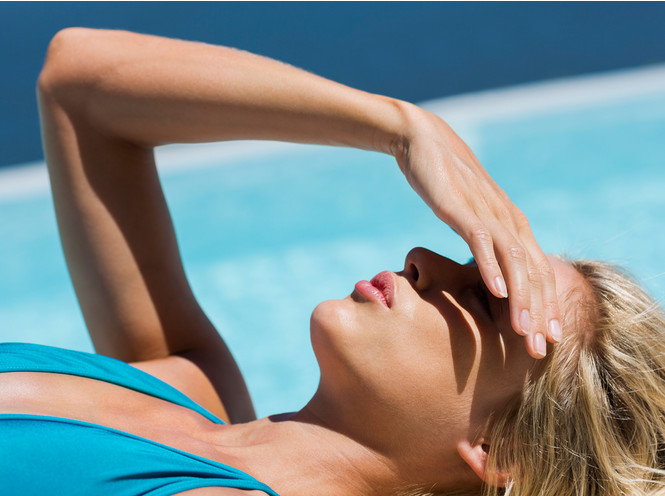
There are three kinds ultraviolet rays: A, B and C(UVA, UVB and UVC respectively). O spectrum C say no we will : they are the most powerful and dangerous, butpose no threatbecause they do not reach the surface of the Earth - they are absorbed by the ozone layer.solar rays of the spectrum B- this is the ultraviolet, thanks to which we sunbathe (if its doses are reasonable) or burn (when we mindlessly "roast" in the sun for a long time). UVB - rays penetrate the skin only to the depth of the upper layer of the skin ─ the epidermis, but with regular abuse of sunbathing, they provoke photoaging and can cause cancer. Good news lies in the fact that the rays of spectrum B are maximally active only in the spring-summer period (although during the most inconvenient hours ─ during the day, from 11 to 16). Much more insidiousSpectrum A rays. They “work” equally well in any season and time of day, they are not lingered by clouds in the sky, nor by car or window glasses, nor even by clothes. UVA rays are more dangerous than UVB rays, because they can penetrate deep into the dermis, damaging the structure and DNA of cells. In the first case, this is fraught with premature aging and wrinkles (for example, when elastin and collagen fibers change under the harmful effects of radiation) and hyperpigmentation, in the second - the development of skin cancer.
A product with SPF will protect the skin from sunburn, but if it does not contain UVA filters, it will not provide maximum protection from the sun.
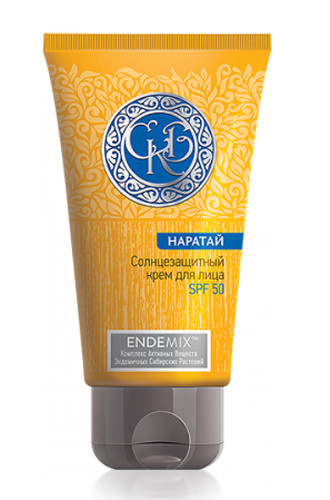 Sunscreen for the face "Naratai" SPF 50, "Siberian Health"
Sunscreen for the face "Naratai" SPF 50, "Siberian Health"
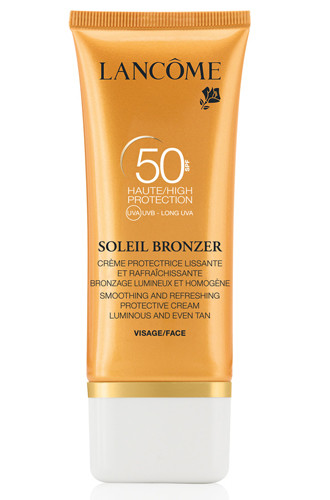 Soleil Bronzer SPF 50 face sunscreen with enhanced protection against rays A and B, Lancôme
Soleil Bronzer SPF 50 face sunscreen with enhanced protection against rays A and B, Lancôme
The sun protection factor (SPF) neutralizes the B-spectrum rays (the ones that cause sunburn), but does not block the A-spectrum rays. Ideally, a sunscreen should provide protection from both types of UV, so you need to look for a tube that will definitely have the letters UVA and UVB, not just SPF (whatever big value you want).
The letters UVA in a circle mean that the UVA and UVB filters in the product are in a ratio of 1:3. Ideally, it should be 1:1.
If UVB protection is “indexed” by SPF, then UVA protection indices are the following letters: PPD (Persistent Pigment Darkening), PA (Protection Grade of UVA) and IPD (Immediate Pigment Darkening). All of them are used to indicate the protection of the skin from ultraviolet A spectrum. Different countries use different indices, and in our country they are often forgotten when translating the composition of the product. Therefore, if these abbreviations could not be found on the jar, pay attention to the letters UVA, even without specifics, present on it. If the indexes are found, it is easy to “read” them ─ the larger the value, the better.
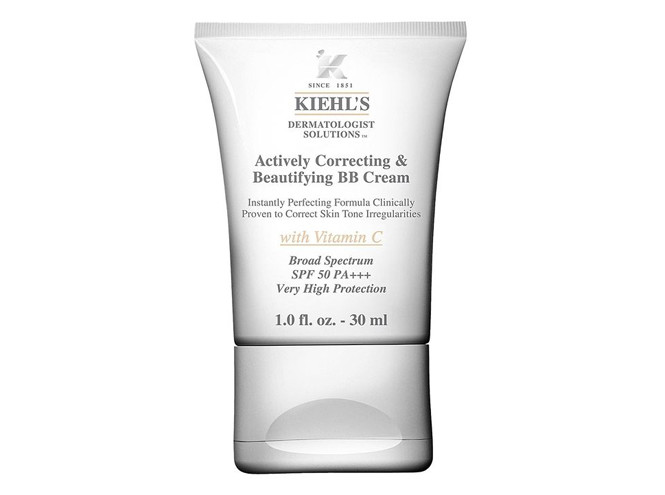 BB cream with vitamin C to even out skin tone, Kiehl's: SPF 50 and PA (Protect A) +++ indexes mean a very high degree of protection against UVA and UVB rays (recommended for owners of fair skin prone to redness and sun burns)
BB cream with vitamin C to even out skin tone, Kiehl's: SPF 50 and PA (Protect A) +++ indexes mean a very high degree of protection against UVA and UVB rays (recommended for owners of fair skin prone to redness and sun burns)
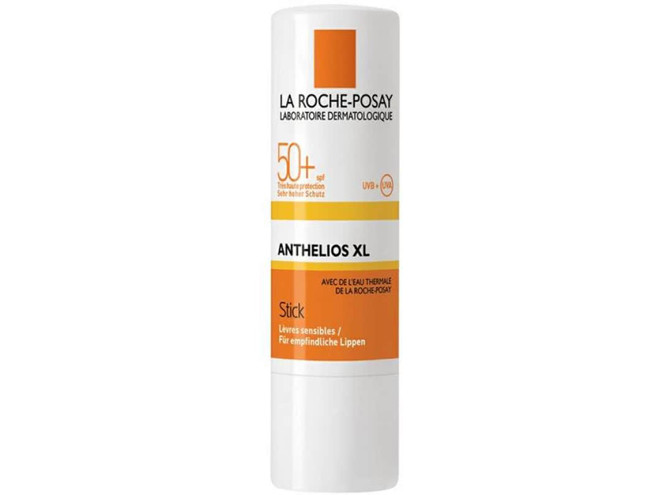 Anthelios XL Sun Stick, La Roche-Posay: SPF 50 protects against UVB rays (very high protection) and PPD 26 (listed on the back of the packaging) ─ high protection against UVA rays (as classified, the minimum recommended PPD index ─ 8, maximum ─ 42)
Anthelios XL Sun Stick, La Roche-Posay: SPF 50 protects against UVB rays (very high protection) and PPD 26 (listed on the back of the packaging) ─ high protection against UVA rays (as classified, the minimum recommended PPD index ─ 8, maximum ─ 42)
2. We trust only the most "powerful" protection factor - 50+ and above
Wrong: we select SPF depending on the circumstances and individual characteristics
UVA -filters in the composition of the sunscreen are very important, but also about SPF as the main protection against sunburn should not be forgotten.Sun protection factors in the composition of the product differ in levels of protection: up to 10-15 units - basic, 15-25 - medium and 30-50 - high. It must be understood, however, that even SPF 100 will not provide absolute protection from the sun, and a jar of "hundred", if any, will not differ much from "fifty".
SPF 10 provides 90% UVB protection, SPF 20 is 95%, SPF 30 is 97%, and SPF 50 is 98% and SPF 100 is 99%.
1 /5
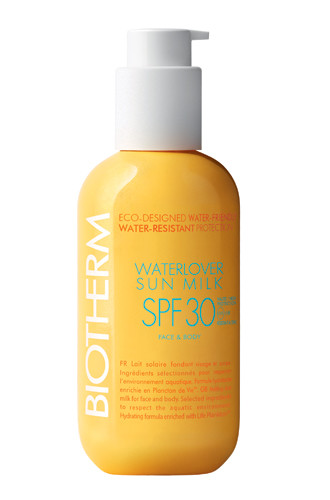
Sun milk for face and body Waterlover Sun Milk SPF 30, Biotherm
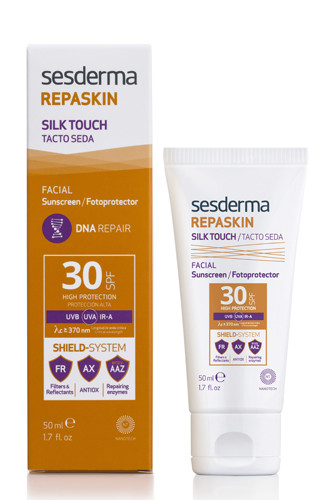
Sunscreen Repaskin Silk Touch 30 SPF 30, Sesderma
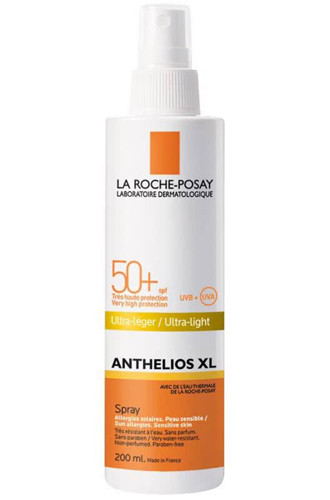
Sun spray for face and body Anthelios XL with a very high degree of protection SPF 50+ / PPD 25, La Roche-Posay
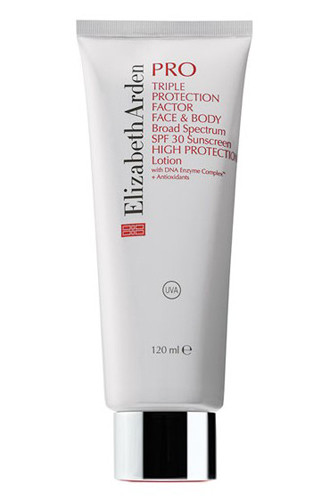
Triple Protection Factor Face & Body SPF 30, Elizabeth Arden PRO
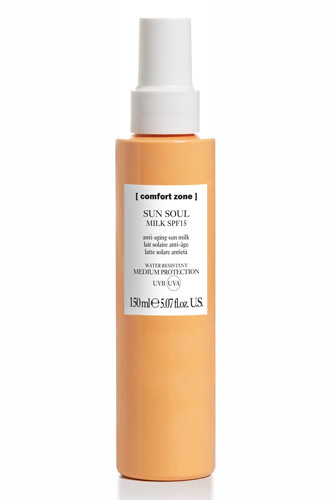
Sun Soul Body Milk Spray SPF 15, [ comfort zone ]
Therefore, when choosing an SPF sunscreen, you need to consider:
1. Skin phototype (an indicator that characterizes its skin sensitivity to ultraviolet radiation - the lighter the skin, the higher the SPF of the protective agent should be);
2. Geography, which directly affects the intensity of the sun (the closer the place is to the equator, the higher the risk of getting sunburn there and the higher the protective factor required);
3. Time of year and day (in spring and summer you need SPF higher than in winter and summer, and in the daytime - from 10 to 16 - UVB rays are the most active);
4. Weather conditions (clear skies require more reliable protection than cloudy).
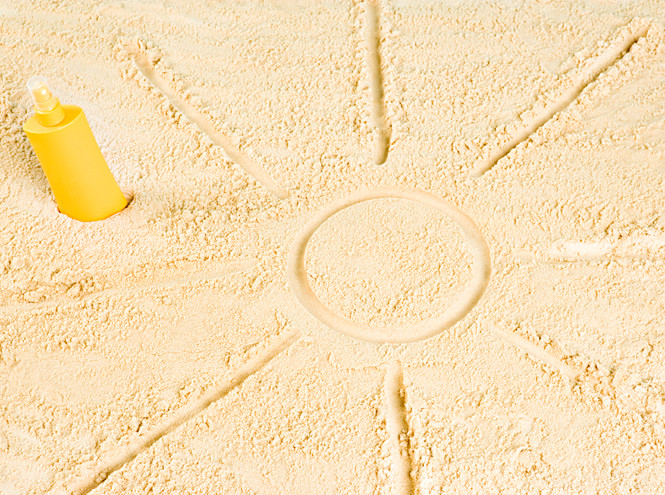
3. We buy separate sunscreens for ourselves and for children
That's right: "children's" and "adult" sun creams differ different types filters
The skin of a child has its own physiological features(lighter, thinner and more delicate), so all children's sunscreens are tested under the supervision of pediatricians. But it's not only that. All UV filters - substances that neutralize the harmful effects of ultraviolet radiation - are divided into physical and chemical. The former are not absorbed by the skin, but form a dense film on the surface (it can be compared with a kind of shield or screen), which reflects the sun's rays. The latter, when applied, penetrate into the upper layers of the epidermis and work directly there: they absorb ultraviolet radiation, while releasing heat (the skin temperature rises), but block its further penetration into the depth of the dermis. In fact, a chemical reaction occurs on the surface of the skin (hence the name of the filters) - it is safe for the body as a whole, but effective. Both physical and chemical filters protect the skin from either UVA rays, UVB rays, or both. But if physical filters are as “natural” and non-toxic as possible, then chemical filters may well provoke allergies. This is unpleasant, but not critical for adults and unacceptable for children. Children's sunscreen cosmetics should only contain physical UV filters!
Physical filters are, for example, zinc oxide (zinc oxide) or titanium dioxide (titanium dioxide). When it comes to chemicals, the composition of the product may include the following names: octocrylene (octocrylene), oxybenzone, benzophenone-3 (oxybenzone, benzophenone-3), avobenzone (avobenzone), octyl salicylate (octyl salicylate), meksoril (Mexoryl SX and XL) ; tinosorb (Tinosorb S and M), padimate O (padimate O), cinnamate (cinnamate), sulisobenzone (sulisobenzone).
Thus, it is possible for an adult to use children's sunscreens, but you should not act on the opposite principle. Finally, here are a couple more differences that may affect your choice. Sunscreens with physical filters, due to the density, opacity and “non-absorption” of the composition, can leave visible marks on the skin, and here there is a conflict between the control of application of the product (it is convenient to apply without missing anything - when it comes to children) and aesthetics (whitish stripes They don't look good on their parents.) Finally, physical filters work instantly, while chemical filters take time to react with the skin and get ready to “work” (which is why most sunscreens should be applied 20-30 minutes before sun exposure).
1 /5
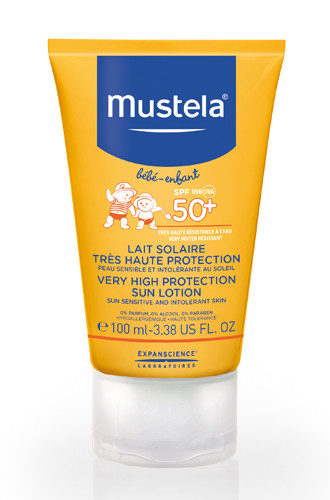
Sun milk with very high protection SPF 50+ (25 PPD), Mustela
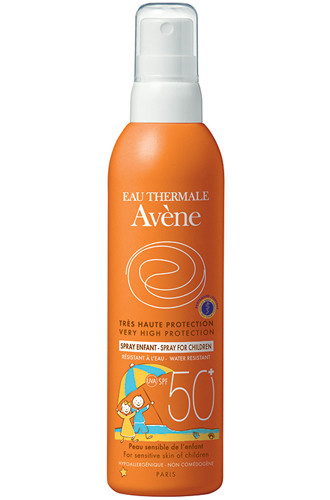
Spray for children SPF 50+ with a high level of protection for sensitive skin, Avène
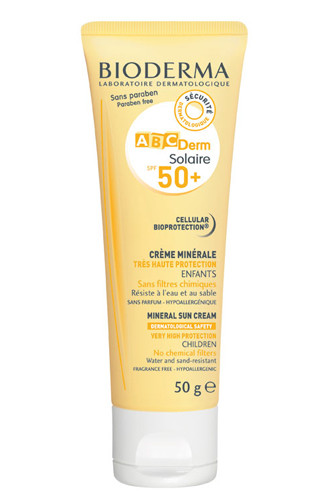
Sunscreen ABCDerm Solaire 50+, Bioderma
![]()
Sun lotion for children STP 50+, Nivea
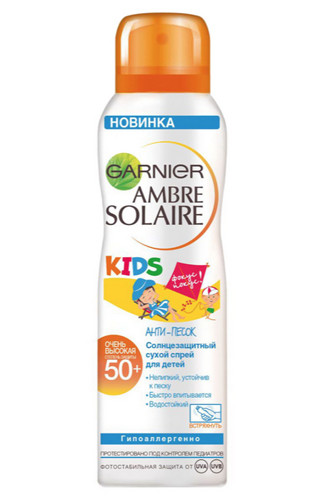
Children's sunscreen dry spray "Anti-sand. Expert protection» SPF50, Garnier Ambre Solaire
4. Regularly update "protection"
Correctly: sun filters"wear out"
Chemical filters literally melt in the sun over time, because each molecule of the protective cream composition “dies” after absorbing a portion of ultraviolet radiation. Physical filters, in addition to being non-waterproof, are erased by close physical or mechanical contact (wiped with a towel - they “teared down” the UV screen from the skin and made it vulnerable). That is why, being in the open sun, you need to constantly monitor the renewal of the sun protection layer: the hotter the sun and the shorter the intervals between entering the water, the more often you reapply the product.
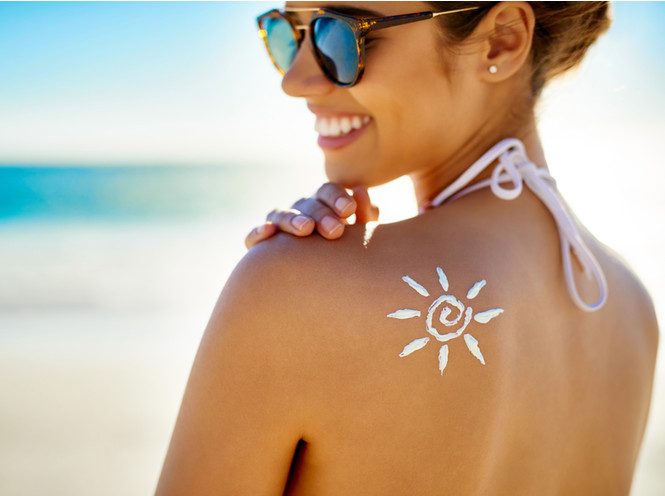
5. Use sunscreen on exposed areas of the body
Wrong: you need to “defend” entirely
Since ultraviolet can penetrate even through T-shirts and pants (we mean all the same ill-fated UVA rays), then in conditions of active sun ─ or “increased insolation”, as dermatologists like to say ─ for example, in southern resorts, it is advisable not to apply sunscreen only on the face and arms and legs uncovered by clothes, but also on the whole body. The rule allows exceptions if the clothing already has UV protection ─ these are, as a rule, children's items for outdoor activities (most often swimwear and T-shirts), sports equipment (for example, rashguards for surfers, divers, cyclists, etc.), head headwear.
6. We run for cosmetics marked with SPF on the eve of the holidays
Wrong: daily care products and “decoratives” should also have a sun protection factor
Sunscreens can be divided into two types: for protection against long-term and short-term UV -radiation. The first have SPF not lower than 30, protection from two types of ultraviolet radiation, water resistance. This group includes "beach" and "sports" sunscreens (usually have yellow-orange packaging), protective sticks with physical filters (zinc and titanium oxides), children's cosmetics. We often forget about the second, and in vain. Day creams, eye creams, tonal foundations and powders, lip balms, decorative cosmetics, despite occasional contact with the sun (for example, on working days), should also provide protection against UV -radiation. The optimal value of "daily" SPF for urban conditions - 15.
1 /4
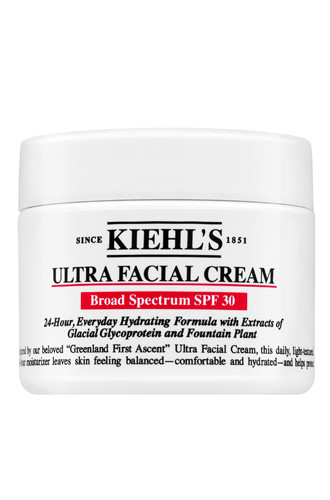
Ultra Facial Cream SPF 30
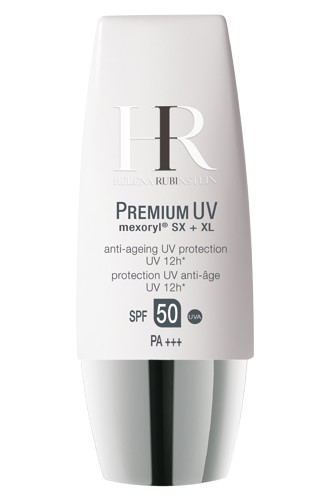
In order for sunscreens to work, they need to be properly selected and used.
Most children's products are intended for children from three years old. Sometimes you can save money by buying a product marked "for the whole family." Younger children should look for a sunscreen marked 0+ in the pharmacy, which means it can be used from birth.
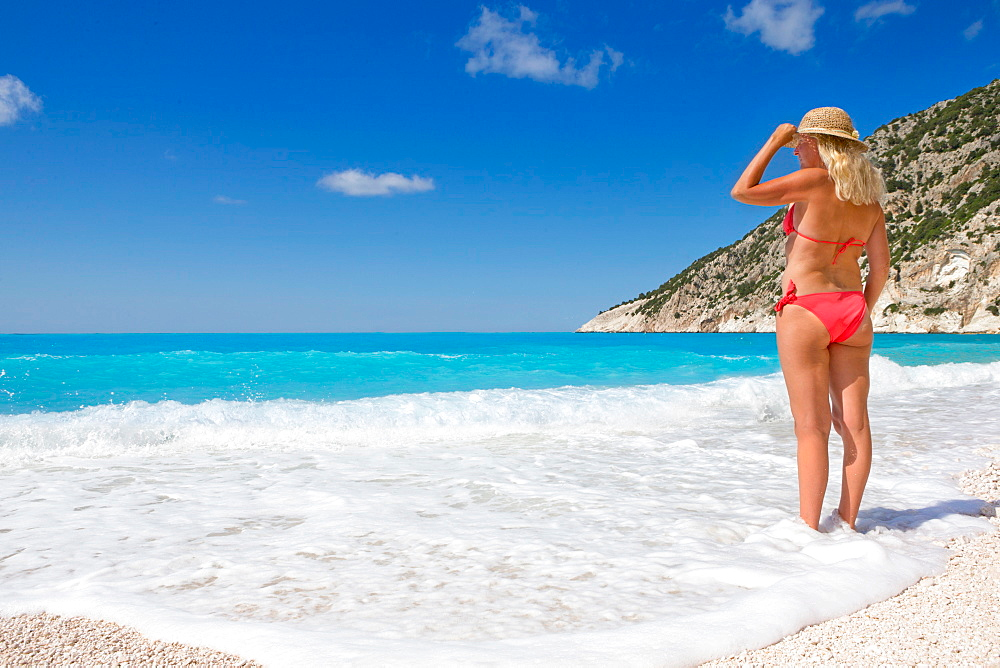
“It is worth noting that products with alcohol and strong fragrances are not desirable for children,” advises dermatologist Sofia Romanskaya.
On all jars of funds, a number that means a protection factor, for example, 6-10, 15-25, 30-50, 50+. Depending on whether you have very fair skin, whether you choose protection for the city or for a seaside resort, this figure should be chosen. The sea needs protection from 30 and above, especially for fair-skinned and light-eyed people, dark-skinned people can choose products with a small degree of protection. The highest protection should also be chosen for children.
This sun protection factor indicates how long you can stay in the sun without harming your health. As you know, safe exposure to the sun without protection is 5 minutes. Therefore, for example, a cream with protection 15 allows you to be in the sun 15 * 5 = 75 minutes. However, numbers are numbers, and no one has canceled common sense. So anointing a child with a cream with protection 50 does not mean at all that it needs to be kept in the sun for 4 hours. It's definitely unhealthy, the doctor says.
In addition to the protection factor number, the packaging of the sunscreen contains the following information: “UVA + UVB protection”, “UFA / UVB” or “UVA / UVB”, “with UVA and UVB filters”. That is, these funds protect from both short and long rays of the sun.
Do not be alarmed when you see components such as titanium dioxin or zinc oxide in the composition of products - these are mineral sunscreens, there are more of them in products with a lower degree of protection, they are less resistant to water. Waterproof products also contain chemical filters. For example, such a component as salicylates or other names. It is better to take products with panthenol, which accelerates skin regeneration, with vitamins, minerals, and products with alcohol should not be chosen by everyone, but only by those who have oily skin. For sensitive and dry skin, such products are not suitable.
Which tool to choose
For the beach and swimming, it is better to take a waterproof product. If only walks are provided, you can get by with a regular cream.
Which tool to choose depends on your preferences. Creams have a thicker and richer texture and are especially useful if the child has dry skin that is prone to peeling. Milk, foam, mousse, gel are lighter, it is easier to distribute them on the skin in an even layer, they are absorbed faster, and do not leave a sticky feeling on the skin.
Liquid forms - emulsions and lotions are usually presented in the form of sprays, which facilitates and speeds up their application, allows more economical use of the protective agent.
“We must remember that the cream does not work immediately, it must be applied 15-30 minutes before going out into the sun, do not forget that it needs to be renewed from time to time, because you sweat, bathe, dry yourself,” the dermatocosmetologist notes.
And most importantly - remember that not a single product protects 100% from the sun and manufacturers honestly write about it on the packaging.
